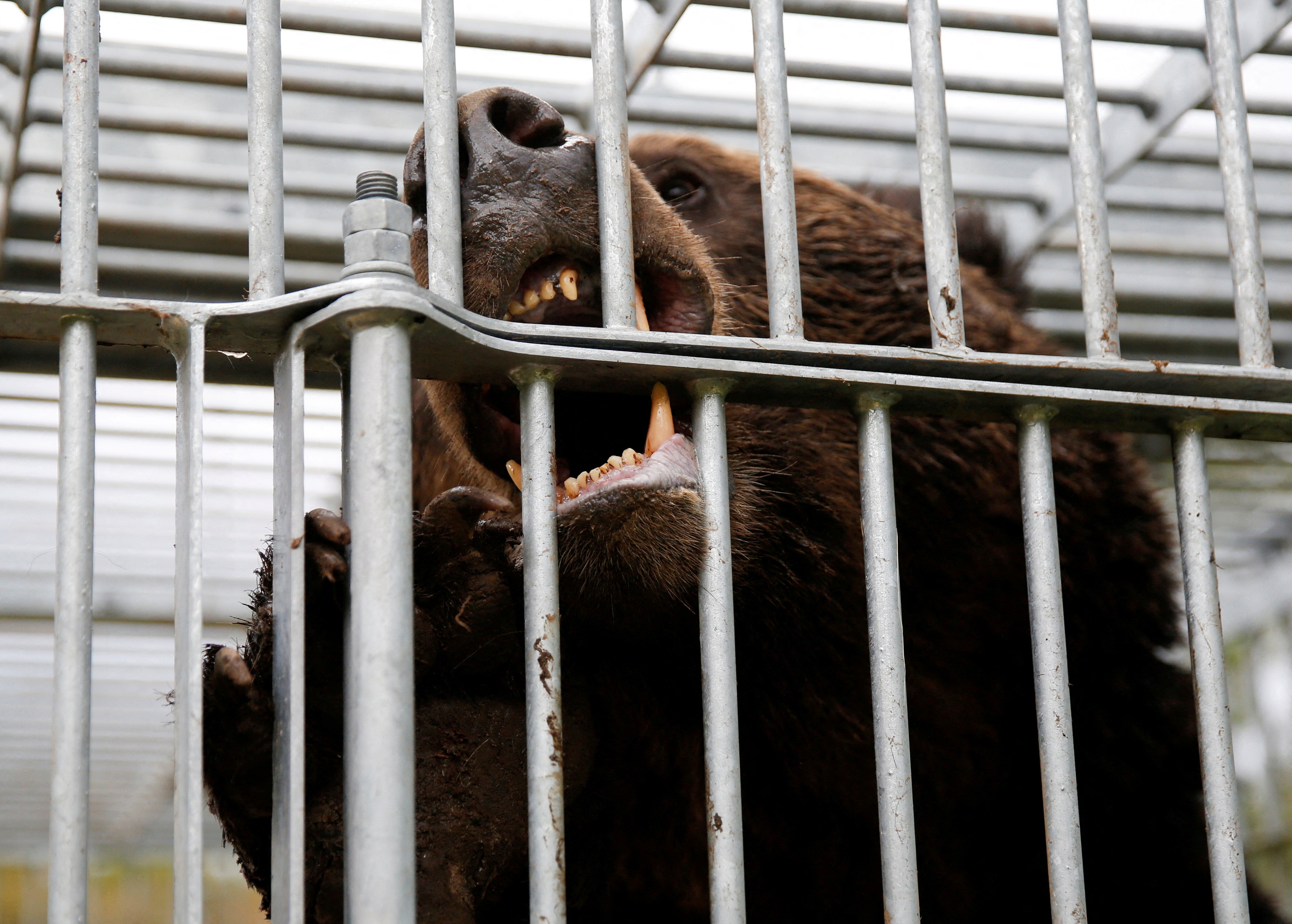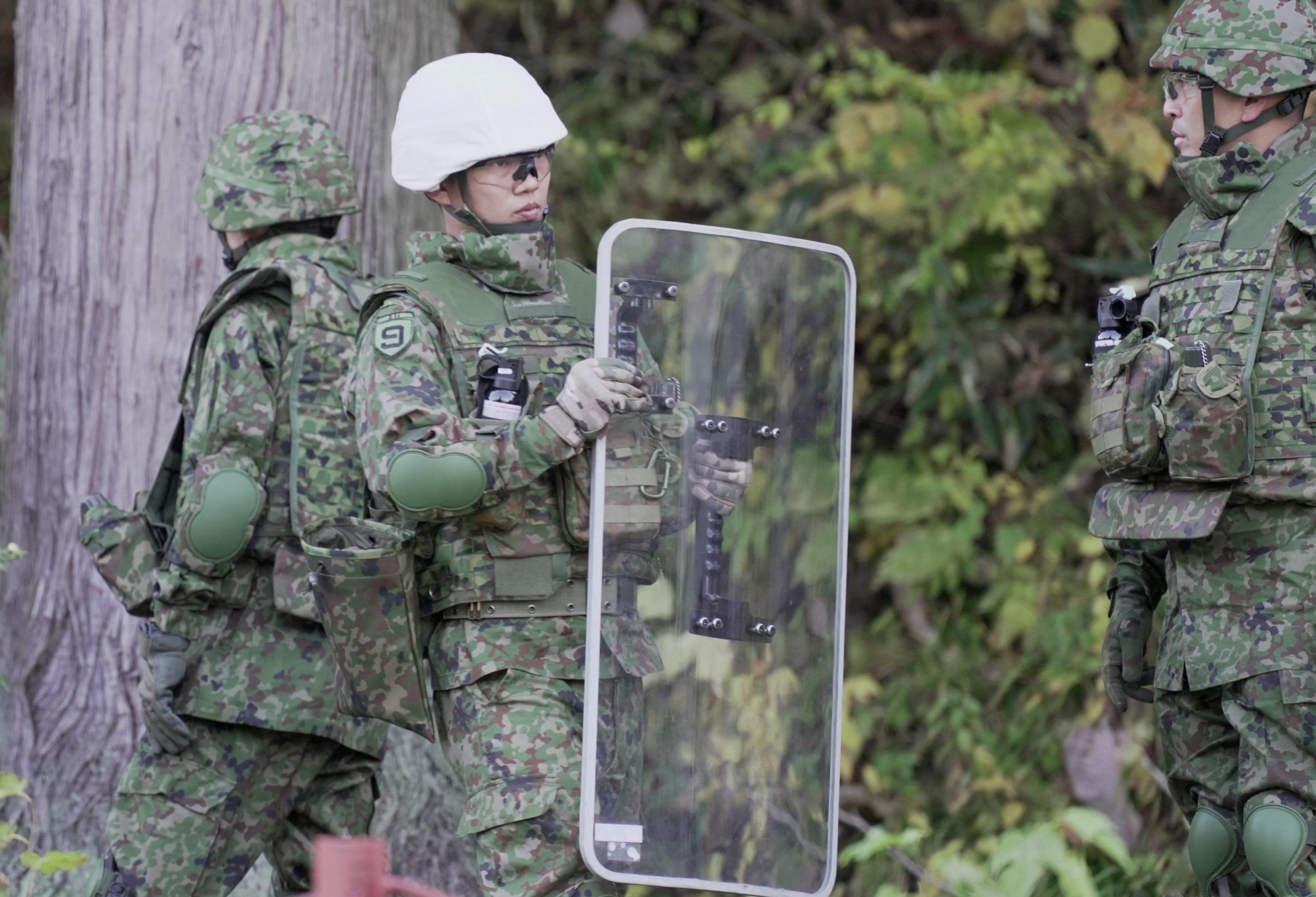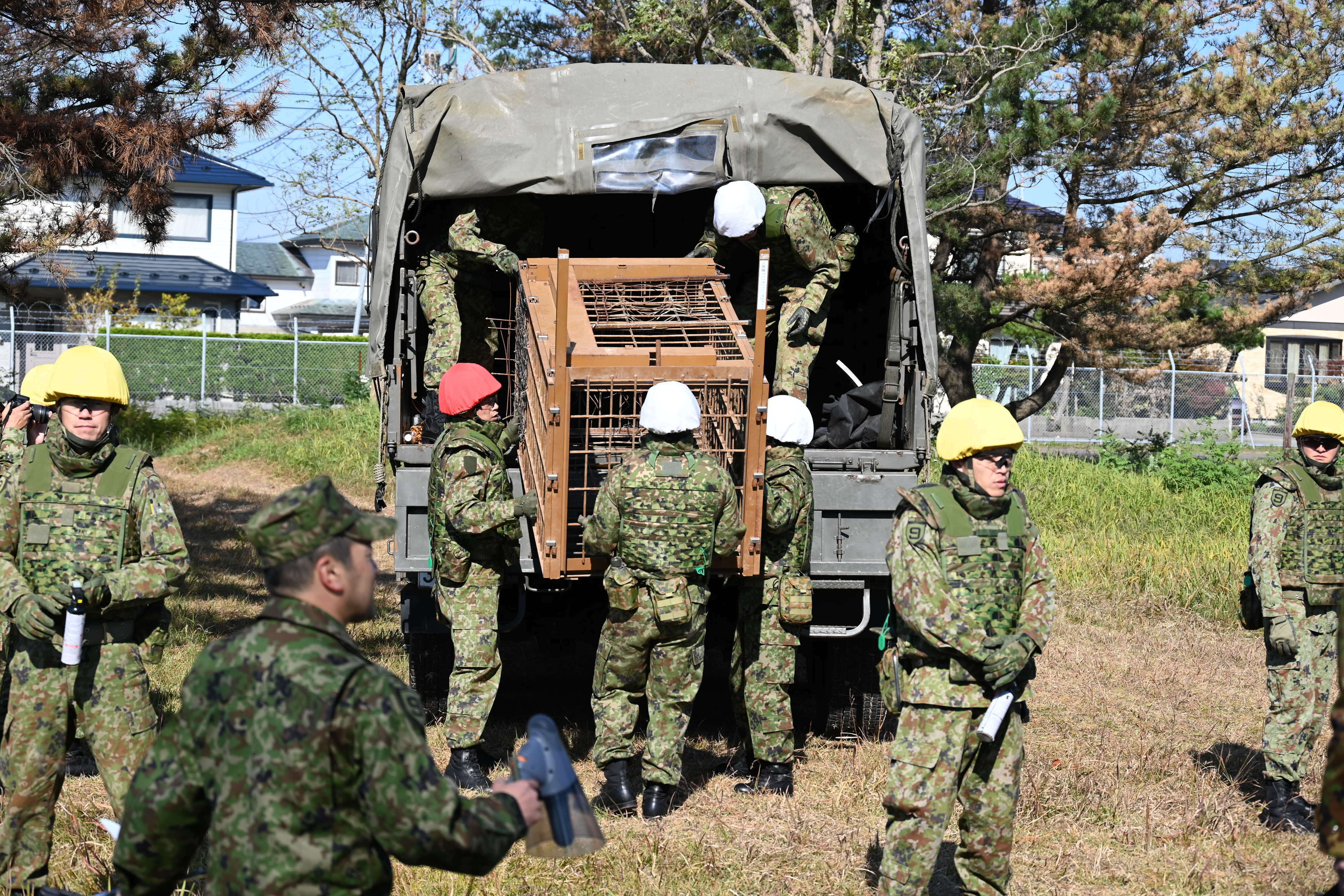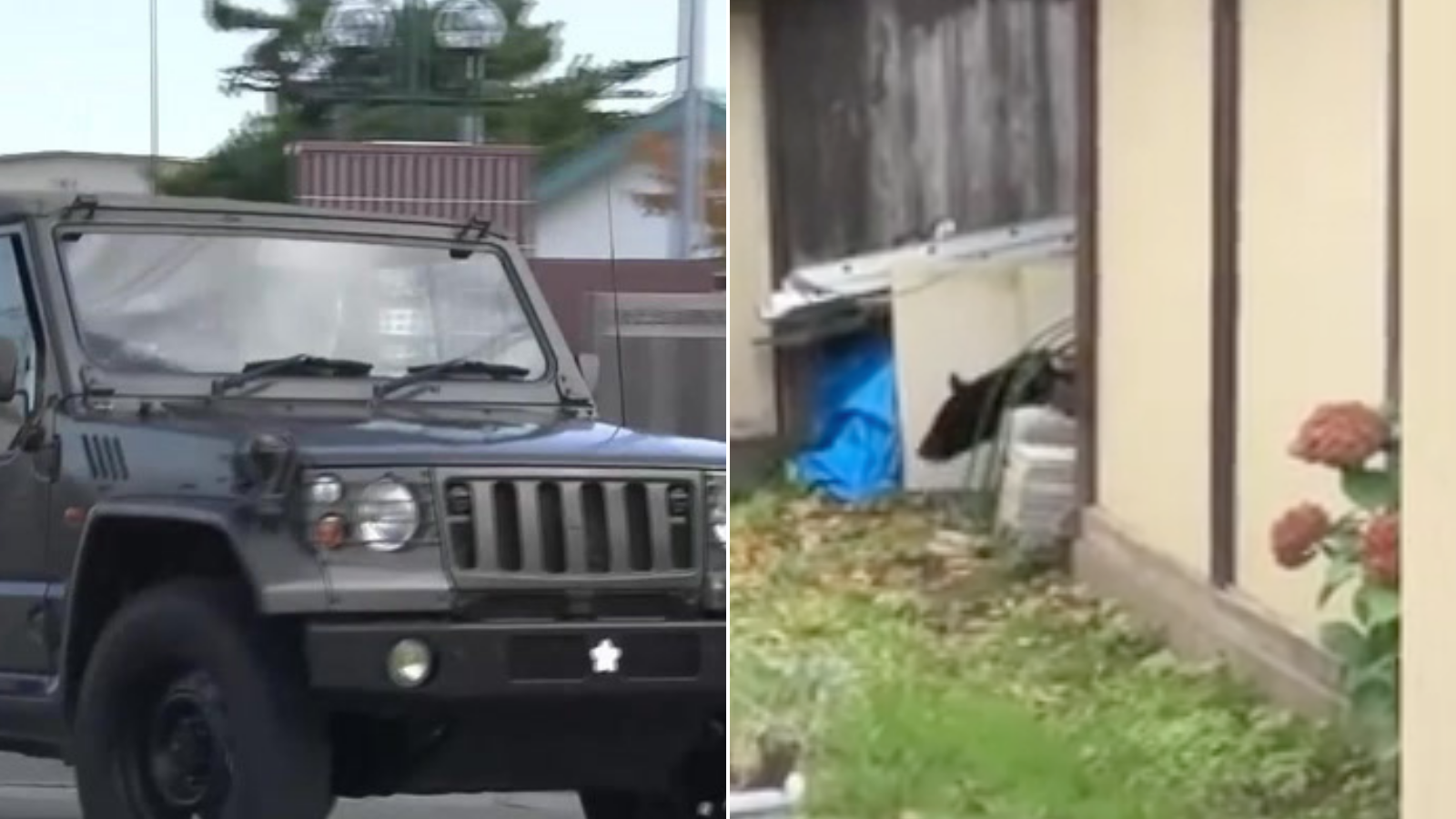Japan is reeling from an alarming surge in bear attacks as authorities scrambled to contain near-daily encounters of the animals invading homes, schools and even supermarkets.
The latest wave of attacks has struck northern prefectures such as Akita and Iwate, where residents now reportedly carry bags with bells to scare off bears and hunters patrol forest edges.
With 13 people killed since April, this is the highest toll on record for fatal encounters with bears.
On Tuesday, local media reported that to complement broader countermeasures against the surge in bear encounters, Japan’s tourism authorities are now moving to protect visitors at hot spring resorts.
The Japan Tourism Agency is reportedly planning to subsidise up to half the cost of installing protective fences around rotenburo – open-air baths at traditional inns and hotels – following a rise in bear sightings near popular tourist areas, The Japan Times reported on Tuesday.
The initiative will form part of a nationwide safety package expected to be finalised later this month, funded through the government’s 300m Japanese Yen budget allocation for improving safety at tourist sites in fiscal 2025.
If further resources are required, officials say additional funding could be sought under next year’s budget, reports said.
Exact details are still being worked out in consultation with lodging operators, some of whom have expressed concern that fences might spoil the natural views that ryokan guests value.
However, officials stress that safety remains the priority, especially after several incidents of bears wandering into accommodation facilities across the Tohoku region.

Earlier, Deputy chief cabinet secretary Fumitoshi Sato said: “Every day, bears intrude into residential areas in the region and their impact is expanding. Responses to the bear problem are an urgent matter.”
In one recent tragedy, a worker at a hot spring resort in Kitakami, Iwate Prefecture, was killed in October after being mauled by a bear while cleaning an outdoor bath.
Earlier this month, it was reported that Japan has deployed its Self-Defence Forces (SDF) to northern Akita prefecture to help contain a surge in deadly bear attacks, as sightings in the region have jumped sixfold to over 8,000 this year.

Thirteen people have been killed and more than 100 injured nationwide since April in bear attacks.
About two-thirds of this year’s fatal bear attacks have been reported in Akita and Iwate prefectures, prompting Japan’s military to deploy troops to assist with setting and inspecting traps after urgent appeals from overstretched local authorities.
In Akita, residents say bears are increasingly straying into villages and near shops in sparsely populated rural areas, likely driven by dwindling natural food supplies ahead of the winter hibernation season.
Troops have been sent to Kazuno and nearby cities like Odate and Kitaakita to help set and inspect traps, while trained hunters carry out the culling.

“The townspeople feel the danger every day,” Kazuno mayor Shinji Sasamoto said. “It has affected how people live their lives, forcing them to stop going out or cancel events,” Mr Sasamoto said.
Residents have started avoiding forests and staying indoors after dark, officials note.
In Akita, 68-year-old Keiji Minatoya still recalls the moment a bear lunged out of his garage in 2023, knocking him to the ground and biting his face. “I was thinking: ‘This is how I die,’” he said, describing the terrifying encounter that he narrowly survived by fleeing into his home.

Japanese black bears, found across much of the country, can grow to around 130kg, while the larger brown bears that inhabit the northern island of Hokkaido can reach weights of up to 400kg.
“Japan likely has the highest number of bear-human incidents in the world,” Koji Yamazaki, a professor of animal ecology at Tokyo University of Agriculture told The Japan Times last week.
In October, a black bear wandered into a supermarket in Gunma prefecture’s Numata city and attacked two men, while another swiped at a Spanish tourist waiting at a bus stop in Shirakawa-go in Gifu prefecture.

Experts say bear attacks usually rise in autumn before hibernation, but climate change and a shortage of their usual beech nut food may be pushing them into towns.
According to The Japan Times, a woman in her 70s was killed earlier in October by a bear while foraging for mushrooms in a forest in Miyagi prefecture.
Last week, a man in his 50s was hospitalised after being attacked by a bear in Fukushima prefecture’s Aizubange town, marking the latest incident in Japan’s escalating wave of bear encounters.
🇯🇵 Another frightening bear attack in Hokkaido, Japan. This time a bear actually managed to break into a local military base. I think it's time for the government to start training and paying hunters to prevent this from happening. pic.twitter.com/grL9lcsYYX
— 鈴森はるか 『haruka suzumori』 🇯🇵 (@harukaawake) October 29, 2025
Police said the man suffered head injuries but is in stable condition.
Earlier in the week, another resident in his 80s was also mauled in the same neighbourhood, heightening local fears.
Scientists attribute the spike to a growing bear population and a poor acorn harvest that has driven the animals closer to human settlements in search of food.
Experts warn Japan’s bear population – now more than 50,000 across brown and black species – has outgrown the country’s mountainous habitats, with climate change, rural depopulation, and declining hunter numbers worsening the crisis.
A video visualization of Japan's bear attack problem.
— Jeffrey J. Hall 🇯🇵🇺🇸 (@mrjeffu) November 7, 2025
It shows all recorded bear attacks from April to November 4, 2025.
•Yellow: humans injured
•Red: humans killedpic.twitter.com/ht1L5A8ovR
Dr Naoki Ohnishi, a researcher at the Forestry and Forest Products Research Institute, told AFP that some mountain areas have become “overcrowded”.
“Put simply, the size of the bear population has gone beyond the capacity of the mountains to hold them,” he added.
Japan reinstated bear population control measures in 2024 after years of protection, but efforts are hampered by a shortage of hunters – now fewer than half the number in 1980 and mostly elderly.
Despite limited resources, authorities culled over 9,000 bears in 2023-24 and more than 4,200 between April and September this year, including over 1,000 in Akita prefecture alone.
How Sanae Takaichi’s Taiwan remark sparked a diplomatic row between Japan and China
The ‘monkey-chasing squad’ trying to stop macaques from invading homes
Tatsuya Nakadai death: Legendary Japanese actor and Kurosawa collaborator dies at 92
Tsunami warning issued after powerful quake strikes off coast of Japan
Another bear attack in Japan as earlier mauling victim calls for ruthless response
Japan sends in troops after ‘daily’ bear attacks threaten schools and tourist spots







